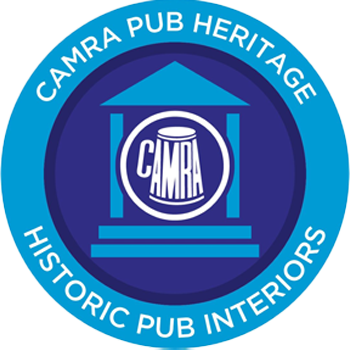This website is currently in beta. If you wish to go back to the current site please click here. To provide feedback or find out more about this site, please click here.


Let us know your thoughts by leaving a score
A CAMRA heritage pub. Corridor pub designed for upright drinking. Carved bar back, tiled floor, wood panelled wall. Two magnificent advertising glass panels. There is an upper dining room. Now independent since late 2000s, ex-Greene King. Weekend opening hours maybe later. Reopened under new ownership following refurbishment.
Historic Interest
Grade II listing:- Public house. Circa 1667, altered. Stuccoed brick. Roof not visible. 4 storeys plus attic. 2 bays. Early C20 pub front to ground floor. Square headed architraved windows. Cornices above ground, first and third floor windows. Interior retains early turned baluster staircase from second floor upwards.
Three star - A pub interior of outstanding national historic importance
Listed status: II
Claimed as London’s first Irish pub, the Tipperary was taken over by Mooney’s of Dublin in 1895 who promptly refitted this small establishment under architect R L Cox. You will spot the Mooney’s lettering at the front doorstep and the shamrock-embellished mosaic running down the right-hand side floor in an attempt to establish the Irish credentials. Some Irishness lives on with plenty of Guinness sold, a big thing being made of St Patrick’s Day, and, of course, the survival of Mooney’s late Victorian interior. On the ground floor there is a single, long bar stretching away from the street that was once lined with boozy newspaper reporters. It’s fully panelled on the right-hand side, has a servery on the left with a carved bar-back and has a pair of magnificent glass panels advertising stout and whisky. They are signed ‘H West, Houghton Street, Strand, WC’. Given that it’s the Irish spirit that is promoted you may be surprised by the spelling. We think of Scottish whisky but Irish whiskey but there was no such convention until well into the 20th century – hence we get Jameson’s ‘whisky’ here. The upstairs bar is known as the Boar’s Head Bar after the original name of the pub – it only acquired its present title after 1918 to commemorate the Great War song.
Claimed as London’s first Irish pub, the Tipperary was taken over by Mooney’s of Dublin in 1895 who promptly demolished it and rebuilt the present small establishment in the late 19th century under architect R L Cox. You will spot the Mooney’s lettering at the front doorstep with mosaic edging in the inner porch. A pair of doors in the full height glazed screen leads into a single, narrow long bar on the ground floor stretching away from the street that was once lined with boozy newspaper reporters.
A shamrock-embellished mosaic runs down the right-hand side floor in an attempt to establish the Irish credentials. A fielded panelled bar counter is situated on the left but the line of the mosaic floor indicates the original bar stretched virtually to the inner doors and was curved here and also ran to the rear door but nowadays there is a small snug area between the end of the counter and the rear door. The carved bar-back also appears to have run to the end of the room as there are remains of three bays in the snug area. Greene King publicity states that they ‘refitted the interior to the style of Mooney’s days’ and adds ‘all the panelling, fixtures and fittings have been retained’. It is likely, therefore, that the counter was shortened (and part moved upstairs as it matches it) or the present bar dates from the 1930s due to its style or even the 1960s? There are three stubs of partitions with coloured leaded panels in the top which could date from the 1930s or more likely be Greene King 1960s additions. Also, there may have been a small private bar on the ground floor possibly added in the 1930s and removed in the 1960s?
What is definitely a survival of Mooney’s late Victorian interior is the dark panelling running all along the right hand wall featuring a number of small bevelled mirrors and a pair of magnificent glass panels advertising stout and whisky. They are signed ‘H West, Houghton Street, Strand, WC’. Given that it’s the Irish spirit that is promoted you may be surprised by the spelling. We think of Scottish whisky but Irish whiskey but there was no such convention until well into the 20th century – hence we get Jameson’s ‘whisky’ here.
The upstairs bar is known as the Boar’s Head Bar after the original name of the pub – it only acquired its present title after 1918 to commemorate the Great War song. There is the original staircase at the rear and at the front the staircase from the front lobby looks like it was a later addition, possibly in the 1930s? The upstairs bar has a 1930s brick fireplace painted a deep red colour, the fielded panelling looks like it could date from the same period, and the counter could have been added here in either the 1930s or 1960s. The bar back looks modern.
This Pub serves 1 changing beer and 0 regular beers.
Tipperary, London
Changing beers typically include: Twickenham - Red Sky